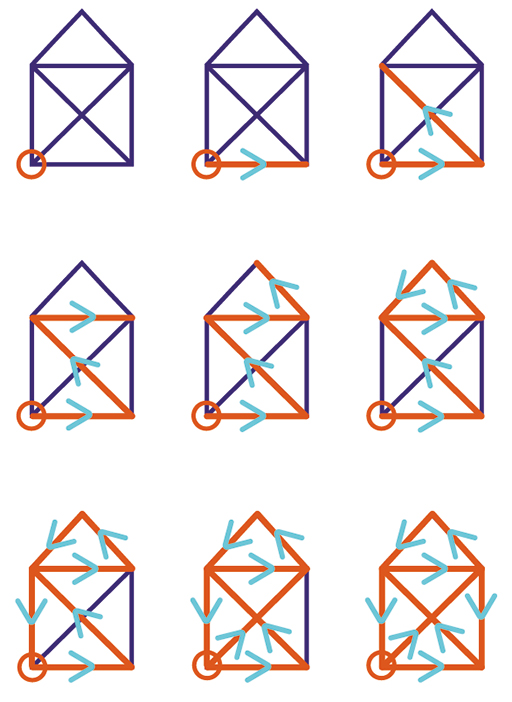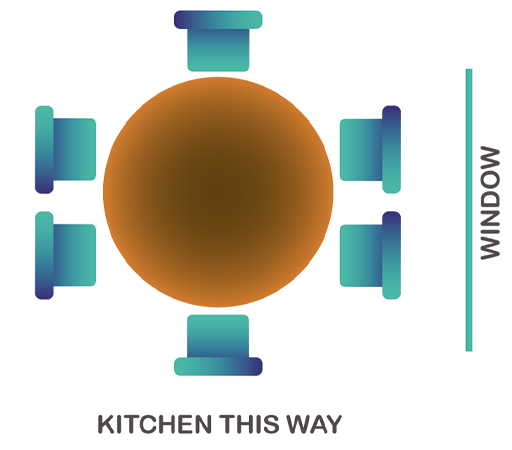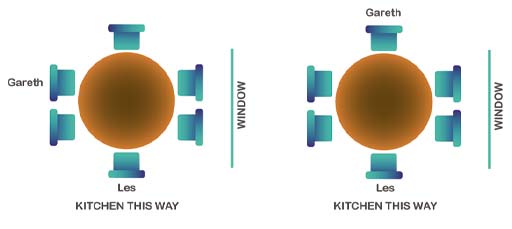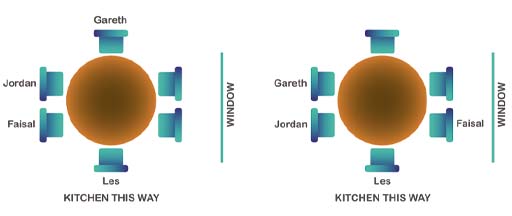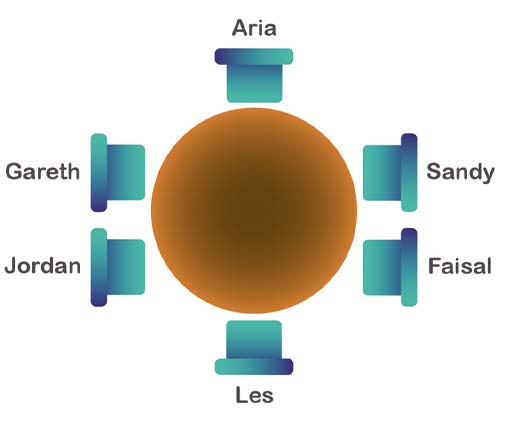1 Puzzles and real-world maths
You probably use maths every day without realising, from working out how much change you might receive, to how long a journey might take, to solving puzzles. You’re going to start by looking at some puzzles.
You may be wondering what puzzles have to do with solving real problems. First of all, they introduce you to working logically and systematically, which is an important general technique that is used often in mathematics. Second, they introduce the idea that sometimes you have to find a ‘way in’ to a puzzle by trying different things. By doing this, it doesn’t mean that you can’t do the puzzle or that you’re getting it wrong!
-
Can you draw the shape given in Figure 1 without taking your pen off the page or going over any lines more than once? Have a go on a piece of paper now.
-
Figure 2 shows a sequence of images which gives one solution to solving the puzzle.
But you don’t have to do it exactly like this! Provided you start with one of the bottom corners and end with the other, you can’t really go wrong.
This type of puzzle relates to a part of maths that involves studying networks. A real-life example of this type of puzzle could be: if a salesperson had to visit five towns, what order should they do it to travel the least total distance overall?
It quite often happens in mathematics that what started out as very abstract topics with no practical use, later turn out to be extremely important in science or technology. Just because it is difficult to see a use at the time does not mean that there will not be some important practical development later!
Activity 1 Organising a dinner party
Sandy and Les are having some friends round for dinner. There will be six of them sitting round their circular table, but unfortunately not all their friends get on well and so they want to arrange a seating plan that will keep everyone happy.
Read the conversation between Sandy and Les and then work out how they can seat their guests.
Try it! See if you can seat everybody and stick to the rules Les and Sandy have. You might find it helpful to draw out the plan of the table so you can try different ideas. Hints are given below if you get stuck.
Hint 1
There’s one person who can only be in one place – put them in first. Then think about which places Gareth can be in.
Comment
You should have put Les at the foot of the table as he wants to be closest to the kitchen.
Figure 4 then shows the two places that Gareth could sit.
Hint 2
For each of the instances given in Figure 4 (Hint 1), where can Faisal be? Remember you need to leave two seats together for Aria and Sandy to sit together.
Comment
Faisal can’t sit next to Gareth. So Figure 5 shows where Faisal could sit (remembering to leave two seats next to each other for Sandy and Aria).
Hint 3
Now think about where Jordan can sit. Remember, he doesn’t want his back to the window and he can’t be seated next to Aria.
Comment
In Figure 5, Jordan has to be in the seat on its own as two seats need to be left spare together for Aria and Sandy to sit next to each other. Because Jordan also can’t have his back to the window it means the seating arrangement can’t be the third sketch in Figure 5.
So the options then become:
Hint 4
Now you need to place Sandy and Aria. Remember, Aria can’t be opposite Jordan, and Sandy can’t be next to Les.
The hints to solve Activity 1, and the order of doing things, may have been quite different to how you approached it. Maybe you figured out where you could put Sandy first, or Aria and Jordan? Maybe you did some trial and error? That’s quite normal! There’s often not just one best approach, but there are some good strategies to use – and that’s what you’ll look at next.


